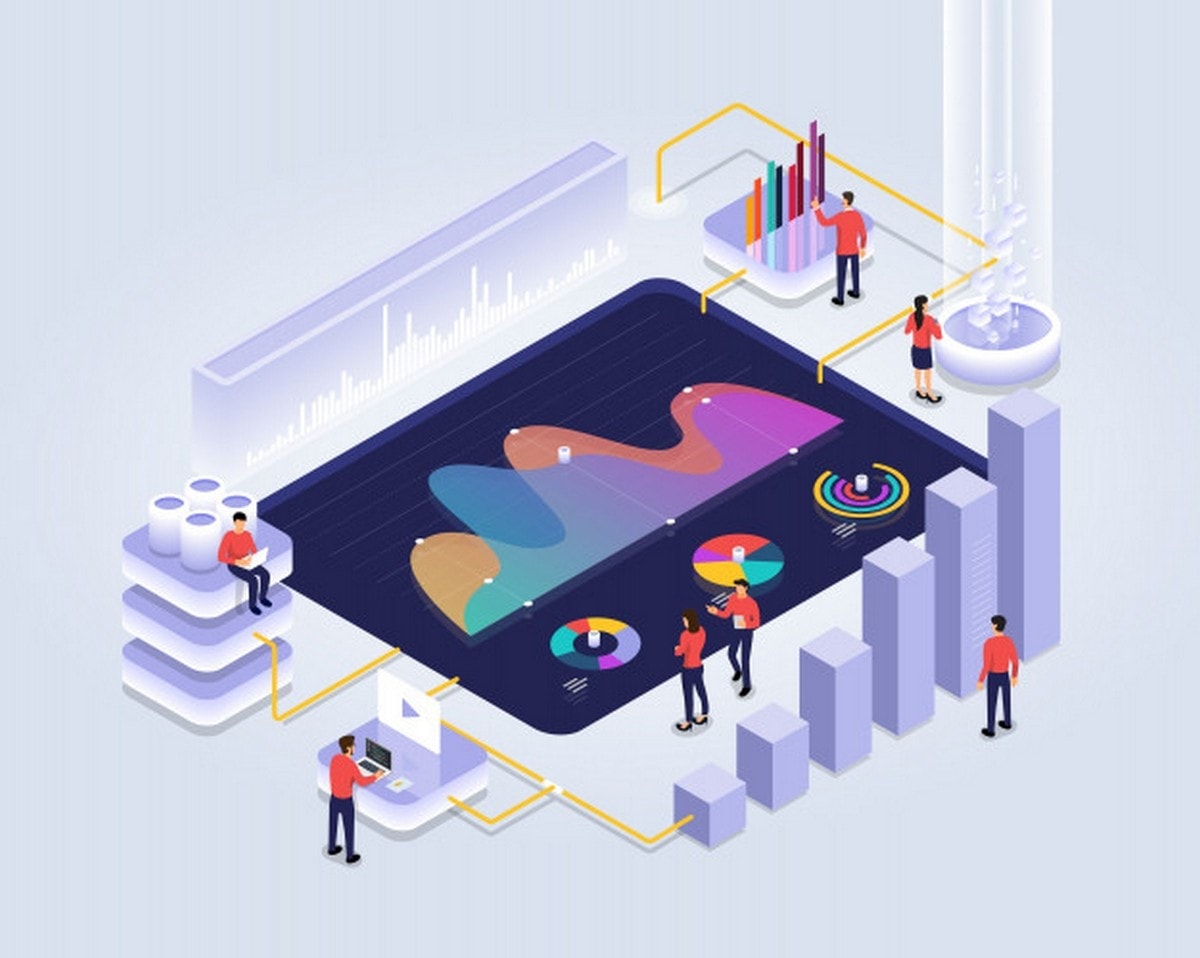
MIS: Understanding 12 Types of Information Systems for Effective Management

Discover the power of Management Information Systems (MIS) in streamlining your company's data management Explore 12 different types of MIS, including Process Control, Sales and Marketing, Decision Support Systems and more Gain a competitive edge with the advantages of MIS in your business operations
A management information system is a sophisticated tool designed to efficiently manage the information system of a company or institution. It operates as a computerized database that is organized and programmed to generate systematic reports for every level of the organization.
The MIS allows for the easy retrieval of reports for specific events. In essence, it provides managers with feedback on their performance. With the aid of this system, top-level management can effectively oversee the entire company.
The system evaluates the company's performance by comparing the planned results, last year's results, and the current results. This aids in measuring progress and achieving targeted goals. A management information system gathers data from various units and operations of the company. While some data is collected automatically through computer counters, other data is entered manually into the system at scheduled intervals. The system generates periodic reports and also allows for on-demand reports using a built-in query language.
Advantages of using management information system
Provides an inclusive picture of an organization.
By implementing MIS, an organization can experience a boost in operational productivity. It not only adds value to existing products but also encourages innovation and facilitates product development. Additionally, MIS aids managers in making informed decisions, leading to overall improved performance.
By analyzing employee performance records and annual revenue generated, organizations can gain valuable insights into their strengths and weaknesses. This information can then be used to improve business strategies and operations. Additionally, these reports serve as effective communication and planning tools for the organization.
Customer data report helps in planning better and more effective marketing strategies and promotional activities.
Management information system helps an organization achieve a competitive advantage.
It helps in effective decision-making, thereby reducing the time for actionable items.
12 Different Types of Management information systems (MIS)
1. Process Control
Process control systems are crucial in monitoring the physical or industrial processes of businesses, such as automobile assembly, petroleum processes, or metal fabrication. By gathering data continuously, these systems provide valuable insights into the performance of the manufacturing process and enable managers to make informed decisions. As one of the most essential types of Management Information Systems, process control systems allow managers to evaluate the system's performance, detect any anomalies or events that occurred over time, and track how often the production process deviated from its cycle.
This type of information is helpful in evaluating the efficiency of the production system and also helps to keep the safety of workers and machinery in-check.
2. Management Reporting System
The management report system is a useful tool for generating reports on a company's operations and finances across all levels of management. It enables managers to compare current performance against previous years and expected performance, allowing for evaluation and improvement of both individual and company-wide performance. Additionally, upper management can use the system to compare financial output and operational efficiency with set goals, ensuring the company stays on track towards achieving its objectives.
3. Inventory control
Inventory of a company includes spoilage, sales, theft, and inventory on hand. Inventory control system tracks all these things and updates management about them.
The inventory system allows management to monitor stock levels in both the company warehouse and retail stores, enabling them to restock items as needed. This system tracks the movement of inventory from the warehouse to the department store, records sales, and manages returns. A reliable inventory system is crucial for any company dealing with the storage and stocking of goods, as these products represent a significant portion of the company's cash flow. Therefore, a robust Management Information System (MIS) is necessary to ensure effective inventory management.
4. Sales and Marketing
The sales and marketing system effectively handles various marketing functions, allowing management to track and execute them with ease.
Projected sales
Improving the quality of products
Handling distribution networks
Assembling and tracking the advertising stores and schedules
Applying effective advertising, P.R and sales promotions
Pricing, discounts, and advertising
These reports tell that the sales of which product is maximum and which products are not doing good in different retail stores of the company.
5) Human resource (Enterprise collaboration / Office automation)
An effective Human Resource Information Management System empowers management to regulate the dissemination of information throughout the organization. This includes the integration of electronic devices, such as cell phones, landline phones, multimedia, intranet, internet, email, voice mail, video conferencing, and file sharing, which are vital components of the office automation information system. These tools enable managers to communicate with other departments, their team members, and for employees to connect with one another. Additionally, HR management systems streamline employee recruitment and daily management processes, ensuring that critical information is accurately tracked and maintained.
The system not only monitors financial elements such as payroll, benefits, and retirement, but also handles various other aspects of the organization's human resources. It facilitates communication among employees, HR, and management by providing legal compliance notices, mandatory training events, and HR policies. The system efficiently tracks work attendance, employee timekeeping, available and used leaves, and enables employees to take sick or vacation leaves without involving their managers physically.
Furthermore, this Management information system streamlines the recruiting process by automatically collecting and evaluating resumes, as well as identifying and assembling potential candidates who meet the necessary qualifications.
6) Accounting and finance
A company's investments and assets are monitored and managed through accounting and finance systems. These systems collect data which is then utilized to prepare financial reports that are mandated by law. These reports assist with federal, state, and local tax functions, as well as pension fund management. In addition to generating reports required for regular financial audits, the system also produces annual reports for upper management.
The accounting and finance system not only facilitates the recording of day-to-day transactions such as sales income, bank deposits, transfers, and returns but also generates important monthly and annual statements, including profit and loss statements and balance sheets. These statements are crucial for middle and upper management to monitor and evaluate company performance, as well as to track and compare current financial status with past performance and future growth goals.
7) Decision Support Systems
A decision support system is a powerful tool that assists managers in making informed decisions in various situations. This system collects data from both internal and external sources, such as population trends, interest rates, cost of new house construction, and financial data, among others. By leveraging this information, managers can use the decision support system to set annual sales quotas, taking into account both external and internal factors.
8) Expert system
One of the main purposes of an expert system is to utilize the knowledge of a human expert in a specific field. This knowledge is then stored and used to assist individuals with less expertise in making informed decisions.
9) Executive information system
Expert systems rely heavily on artificial intelligence to function effectively. By analyzing past actions taken in similar situations, AI can make logical assumptions and decisions based on that data. This makes AI a crucial component in the success of expert systems.
10) Transaction processing system
The executive information system is tailored to support executive managers in effectively managing their team. By providing information through tables and charts, this system simplifies the analysis process and aids in making critical decisions.
A transaction processing system plays a crucial role in gathering and handling data generated from an organization's day-to-day tasks, such as processing orders, payments, deposits, and reservations.
11) School information management system
The implementation of School Information Systems (SIMS) has revolutionized the way schools operate on a daily basis. With more and more schools adopting this technology, SIMS has become instrumental in not only shaping the minds of young students but also in managing the behind-the-scenes activities of a school. One such example is the efficient management of attendance registers, which has now become a seamless process thanks to SIMS. As a result, teachers can save time and focus on more productive activities.
12) Local databases
Local databases are a crucial type of management information system that provides comprehensive insights into the communities living throughout a country. These databases are sourced from various channels such as open business listings, public data, integrated local service offerings, and social survey inputs, offering a wealth of information for decision-making purposes.








